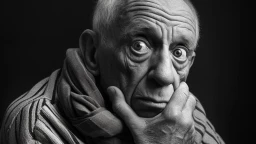Regulatory Framework for Digital Assets Just Released by the White House

The White House has released a new regulatory framework for digital assets, providing guidance to Federal agencies on how to approach regulation in this space. Additionally, this is a big development for the digital asset industry. The industry has been seeking clarity from regulators on how to operate in the US. The release of this framework is a positive step forward for the industry. It will also help to foster innovation and growth in this space. Read on for a summary of the key points of the framework, and what it means for digital assets in the US.
What are Digital Assets?
Digital assets are a type of property that is created, stored, and/or traded electronically. They can include everything from cryptocurrencies to online accounts and data. The White House’s new regulatory framework will help ensure that these assets are properly protected and can be safely traded.
Why the Regulatory Framework for Digital Assets is important?
In the United States, the sale of digital assets is currently unregulated. This means that there are no specific laws or regulations in place that govern the sale of digital assets. This can create a number of risks for investors, including the possibility of fraud or theft.
The regulation of digital assets is important because it will help to protect investors and ensure that the markets for these assets are fair and transparent. The regulatory framework released by the White House will help to accomplish this. It would be done by setting forth clear rules and guidelines for the sale and trade of digital assets.
The regulation of digital assets is also important because it will help to foster innovation and growth in this emerging market. By creating a level playing field, businesses will be able to compete on a level playing field, which will ultimately lead to more innovation and better products and services for consumers.

Promotion of Financial Stability by Regulation of Digital Assets
The United States has released a new regulatory framework for digital assets, which provides clarity for businesses and consumers on how these assets will be treated under the law. The framework is designed to promote financial stability by preventing manipulation and protecting investors, while also fostering innovation and allowing for the responsible use of digital assets.
The new framework applies existing laws and regulations to digital assets, including securities laws, commodities laws, and anti-money laundering regulations. It also creates a new category of asset called a “digital commodity,” which is defined as a digital asset that is not a security or commodity. This classification will provide more flexibility for businesses to use digital assets without running afoul of the law.
Digital commodities are subject to the same rules as other commodities, including requirements for derivatives trading platforms must comply with Know Your Customer (KYC) and Anti-Money Laundering (AML) requirements. Spot exchanges must also implement KYC/AML procedures. Digital commodity futures contracts must be traded on registered exchanges or alternative trading systems, and clearinghouses must clear those trades. Thus, digital commodity options contracts must be traded on registered exchanges or through registered broker-dealers.
In addition to the new classification of digital commodities, the regulatory framework also clarifies that certain stablecoins are not securities. Additionally, Stablecoins are digital assets that are pegged to a fiat currency or other asset, such as gold.
Promotion of Responsible Innovation
The United States government has released a new regulatory framework for digital assets. The new framework is designed to promote responsible innovation while protecting consumers and investors.
The framework consists of three key components:
- A clear definition of what a digital asset is.
- A set of principles for promoting responsible innovation in the development and use of digital assets.
- A mechanism for engaging with stakeholders to ensure that the regulatory framework keeps pace with innovation.
Follow us on Instagram: @Niftyzone









